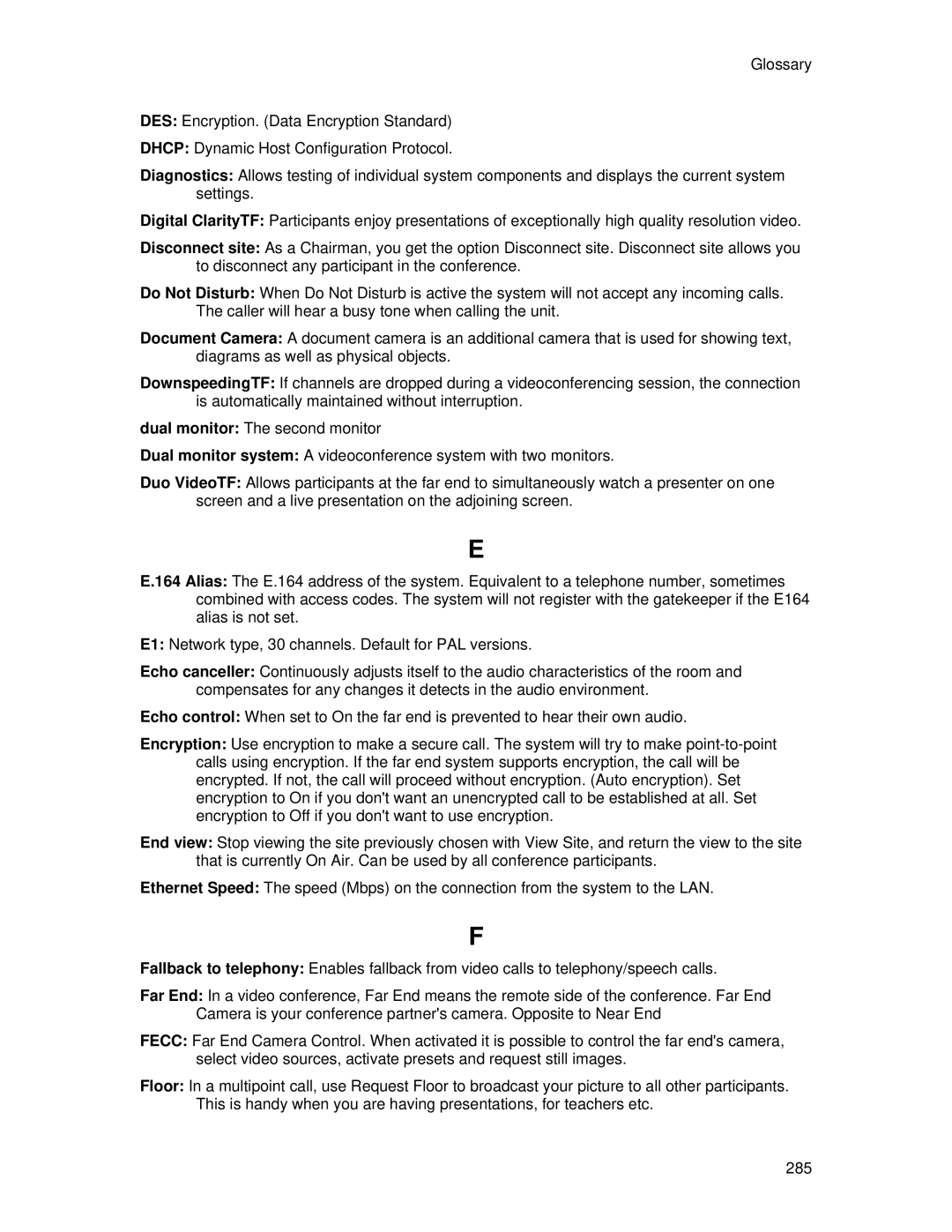Glossary
DES: Encryption. (Data Encryption Standard)
DHCP: Dynamic Host Configuration Protocol.
Diagnostics: Allows testing of individual system components and displays the current system settings.
Digital ClarityTF: Participants enjoy presentations of exceptionally high quality resolution video.
Disconnect site: As a Chairman, you get the option Disconnect site. Disconnect site allows you to disconnect any participant in the conference.
Do Not Disturb: When Do Not Disturb is active the system will not accept any incoming calls. The caller will hear a busy tone when calling the unit.
Document Camera: A document camera is an additional camera that is used for showing text, diagrams as well as physical objects.
DownspeedingTF: If channels are dropped during a videoconferencing session, the connection is automatically maintained without interruption.
dual monitor: The second monitor
Dual monitor system: A videoconference system with two monitors.
Duo VideoTF: Allows participants at the far end to simultaneously watch a presenter on one screen and a live presentation on the adjoining screen.
E
E.164 Alias: The E.164 address of the system. Equivalent to a telephone number, sometimes combined with access codes. The system will not register with the gatekeeper if the E164 alias is not set.
E1: Network type, 30 channels. Default for PAL versions.
Echo canceller: Continuously adjusts itself to the audio characteristics of the room and compensates for any changes it detects in the audio environment.
Echo control: When set to On the far end is prevented to hear their own audio.
Encryption: Use encryption to make a secure call. The system will try to make
End view: Stop viewing the site previously chosen with View Site, and return the view to the site that is currently On Air. Can be used by all conference participants.
Ethernet Speed: The speed (Mbps) on the connection from the system to the LAN.
F
Fallback to telephony: Enables fallback from video calls to telephony/speech calls.
Far End: In a video conference, Far End means the remote side of the conference. Far End Camera is your conference partner's camera. Opposite to Near End
FECC: Far End Camera Control. When activated it is possible to control the far end's camera, select video sources, activate presets and request still images.
Floor: In a multipoint call, use Request Floor to broadcast your picture to all other participants. This is handy when you are having presentations, for teachers etc.
285
